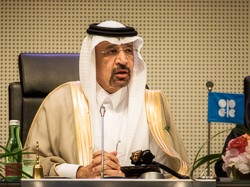
OPEC’s market monitoring committee reported that OPEC reached “120% compliance” with the production adjustments. It also reported that commercial OECD stocks had been reduced by 178 million barrels “since the beginning of the year.”
In reality, OPEC exceeded its collective production limit by about 850,000 b/d in September. It reported production at 32.748 million barrels per day, but that level must be adjusted to be comparable to the 32.5 million production ceiling it set last November.
To get a comparable figure, two adjustments must be made. Production from Indonesia must be added (740,000 b/d) because its output was included in the ceiling, notwithstanding it was dropping out. And production from Equatorial Guinea (140,000 b/d) must be deducted because it was not an OPEC member and its output was not included.
- 32.748 September
- 0.74 Indonesia
- -0.14 Equatorial Guinea
- 33.348 Adjusted
- 32.5 Ceiling
- 0.848 Overproduction
Regarding the stock levels, OPEC reported global OECD stocks had fallen by 178 million barrels “since the beginning of this year,” and stand at 159 million barrels above the five-year average as of the end of September. It did not report the stock level.
As of the end of August, it reported stocks at 2.996 billion, 171 million above the five-year average. That implies an average stock level of 2.825 billion. If stocks are 159 million above the average in September, that implies a stock level of 2.984 billion.
OPEC had reported that stocks stood at 2.985 billion at end-December when the deals went into effect. Therefore, stocks have only dropped 1 million (2.985 minus 2.984), not 178 million.
Because global demand is going into a seasonal decline, stocks will likely end only modestly lower at end-2017 after a year of the deals. Saudi energy minister al-Falih first said he expected global stocks to reach the five-year average by June. At the May OPEC meeting, he said that the current production quotas will "do the trick" of rebalancing stocks to normal levels within six months.

HE Khalid A. Al-Falih, Saudi Arabia's Minister of Energy, Industry and Mineral Resources, and President of the OPEC Conference. Source: OPEC
OPEC had decided to extend the production cuts through March of 2018, recognizing the seasonal drop in demand in the first quarter of the year, during which global inventories can be expected to build. The Russian energy minister had indicated that he would wait until March before determining whether Russia would like to extend the cuts for a longer period of time.
I am expecting that global inventories will be higher during the first quarter of 2018 than they were at the end of 2016 when the cuts began. Furthermore, according to several sources, U.S. production is expected to be rising.
Ian Taylor, CEO of Vitol Group, the world’s largest oil trader, sees the price of the Brent barrel falling almost $14 to $45 in 2018. “I think there’s a chance oil could fall closer to $40 than $50, because I think there’s still one more big surge coming from U.S., which will knock prices down,” he said.
Total SA agrees that a surge in US oil production is on the horizon due to the increased hedging that shale producers are undertaking. “We will see another wave of investment in U.S. shale, no doubt about it,” Patrick Pouyanne, chief executive of French Total, said at a conference in London.
According to Jamaal Dardar of investment bank Tudor, Pickering, Holt & Co (TPH), “There is definitely going to be a pretty large surge in production next year.” U.S. shale producers have hedged one-third of 2018’s oil production at roughly $52 per barrel. TPH is predicting U.S. oil production will reach 10.2 million barrels per day in 2018, higher than the 9.92 that the EIA expects.
Last March, Mr. al-Falih had made it clear that the production cuts were designed as a short-term tool, not a long-term strategy.
“…History has also demonstrated that intervention in response to structural shifts is largely ineffective, and I believe we've learned that lesson. That's why Saudi Arabia does not support OPEC intervening to alleviate the impacts of long-term structural imbalances, as opposed to addressing short-term aberrations such as financial crises, economic recessions, unforeseen supply disruptions, or the like."
Conclusions
If U.S. production continues to rise and global stocks are higher next March than they were at the start of the deals, the decision to continue the deals could be quite difficult, especially as the U.S. captures a greater market share in Asia. In effect, The Saudis and Russians would just be ceding market share without accomplishing their goal.
In the alternative, if they end the deals, a “slug of oil” (using Al-Falih’s phase) would come on the market, torpedoing prices in the short-run. But once North American hedges run-out, shale production would eventually drop, and the elusive rebalancing would finally take place.
Check back to see my next post!
Best,
Robert Boslego
INO.com Contributor - Energies
Disclosure: This contributor does not own any stocks mentioned in this article. This article is the opinion of the contributor themselves. The above is a matter of opinion provided for general information purposes only and is not intended as investment advice. This contributor is not receiving compensation (other than from INO.com) for their opinion.

I strongly disagree. Demand projections have been moved up, expected production is increasing slightly but less than expected, rigs are falling and initial production and reserves per well are not increasing. CapEx budgets being cut. May well be in deficit right now. Be very careful on the short side. Many predicting a drop to 45 before a rebound, but I think its a head fake.